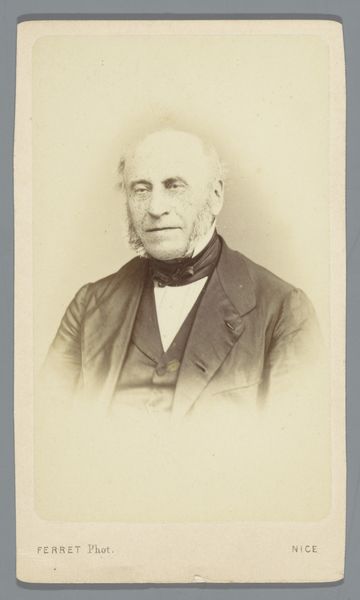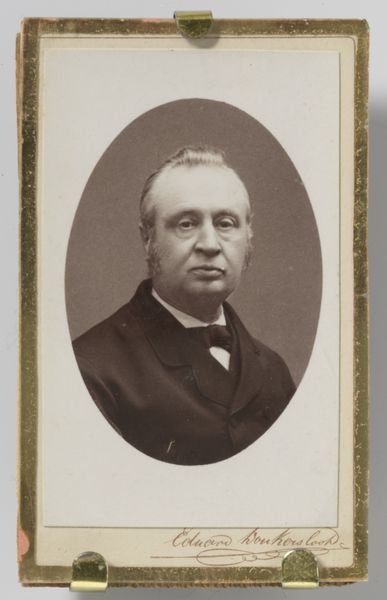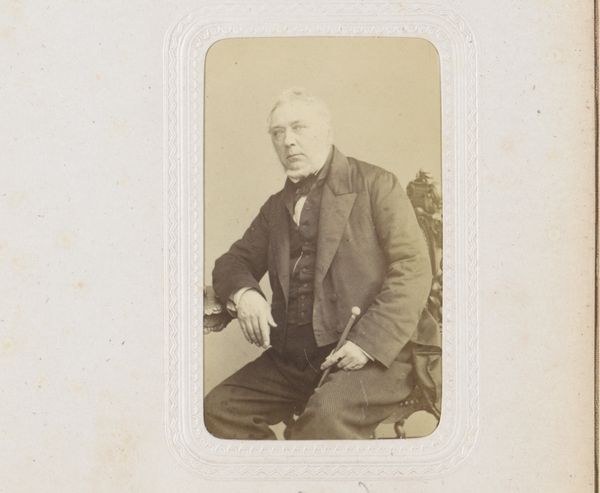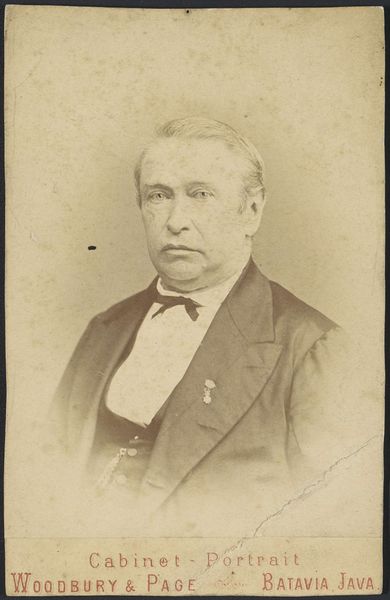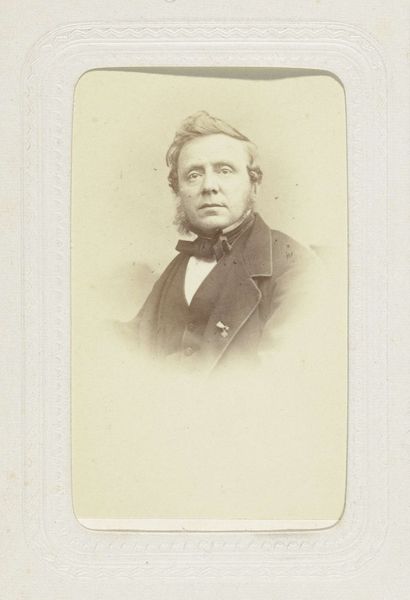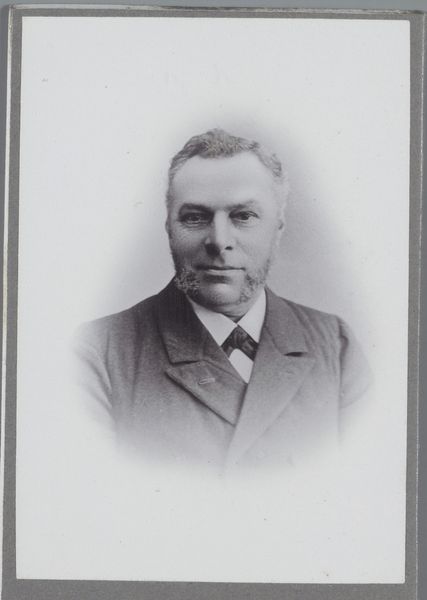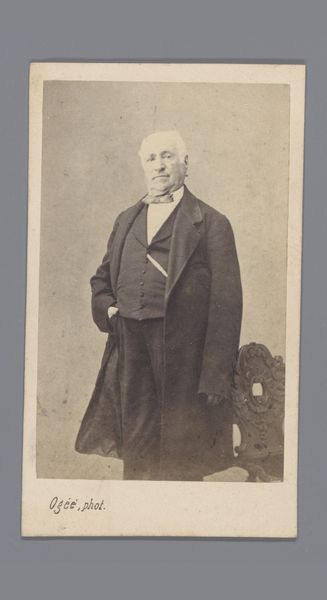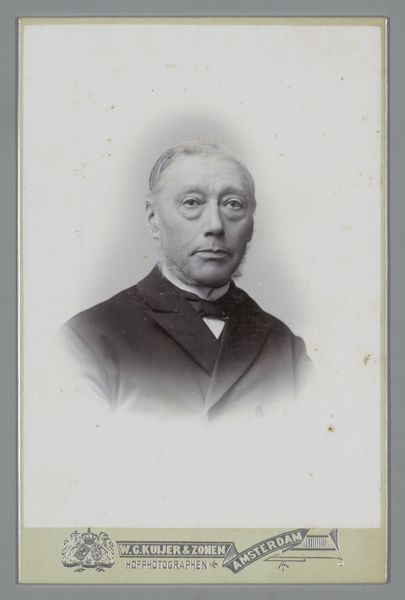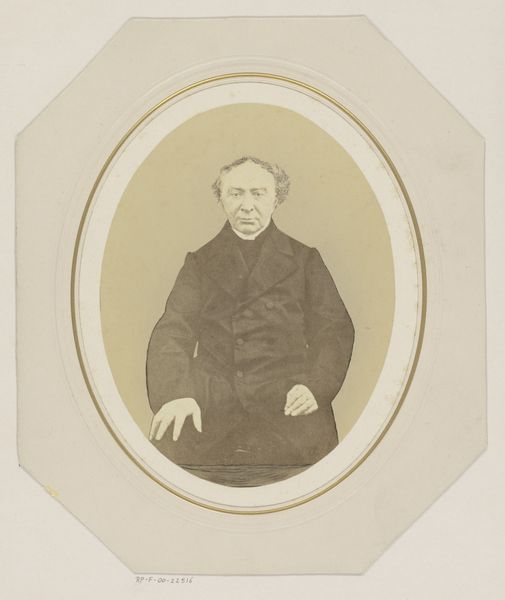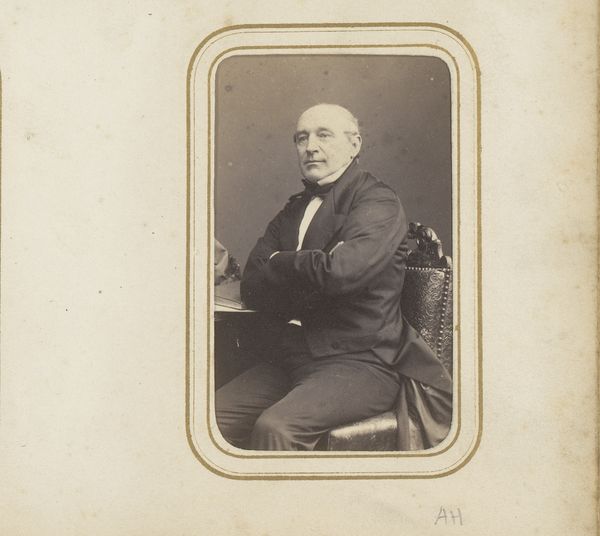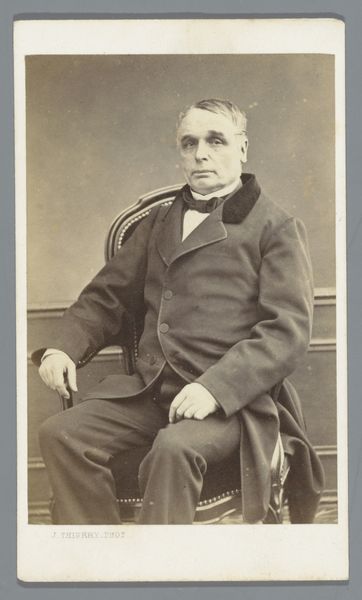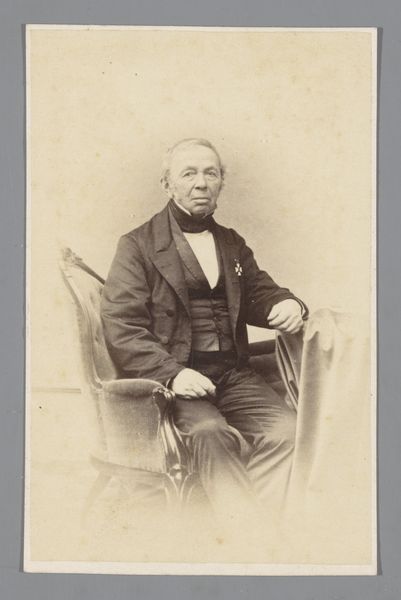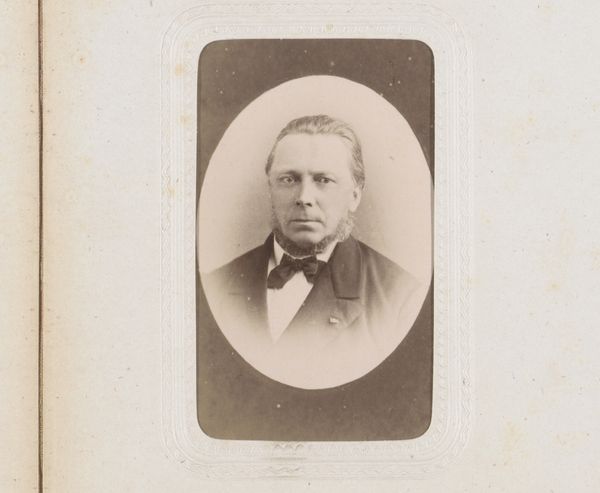
photography
#
portrait
#
photography
#
genre-painting
#
portrait art
Dimensions: height 139 mm, width 98 mm
Copyright: Rijks Museum: Open Domain
Curator: This is a portrait of Abraham Carel Wertheim, taken by Carl Pietzner sometime between 1880 and 1900. It’s a sepia-toned photograph. What are your initial thoughts? Editor: My first impression is one of understated gravitas. The almost monochromatic palette and central composition focus your attention entirely on Wertheim's face, which carries such intensity and experience. The sepia tones contribute a feeling of classic dignity, but also a distance in time. Curator: Yes, and consider the trappings of his social standing, all encoded within his garments. A dark suit, high collar, and crisp white shirt. These aren't mere clothes, they’re symbols communicating respectability and financial stability during that era. Notice, too, his full white hair. It acts as a crown atop his head, signifying age, experience, wisdom. Editor: Indeed. But beyond those immediately discernible class signifiers, let's consider the play of light and shadow. The stark contrast emphasizes the topography of his face, each wrinkle a testament to his life's narrative etched onto his skin. Also, the slightly off-center gaze, away from the lens, contributes to an air of thoughtfulness, maybe even some measure of anxiety. It's quite subtly affecting. Curator: It’s interesting you note that the artist employs portraiture traditions in communicating social position. It can be noted Wertheim was an important figure; a banker and philanthropist who contributed to Jewish organizations, showing dedication to religious causes that supported refugees. So it raises a broader understanding of representation and remembrance, especially of communities impacted by immigration, religion and conflict in Europe. Editor: And even without knowing those biographical details, you get a sense of that responsibility. It’s impressive how much is communicated. Curator: It all leads one to think about who defines history and gets to be remembered, and through which representations or ways of remembering. Editor: Precisely. A single portrait opens into such broader conversations about history and representation itself. Curator: An evocative experience brought through just a singular still image. Editor: Agreed. It goes beyond its time.
Comments
No comments
Be the first to comment and join the conversation on the ultimate creative platform.
